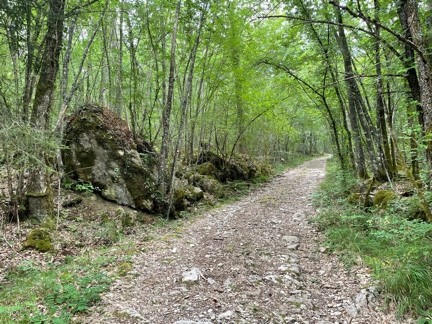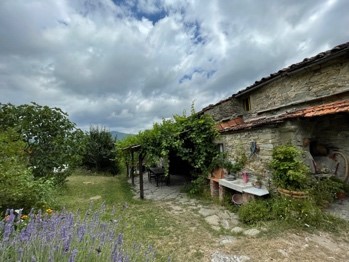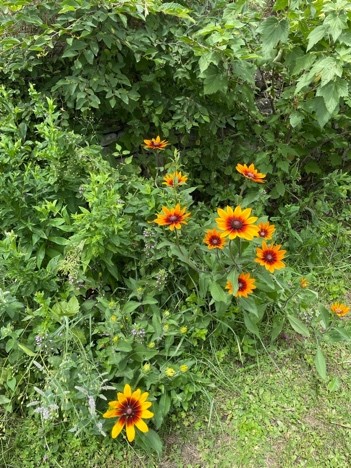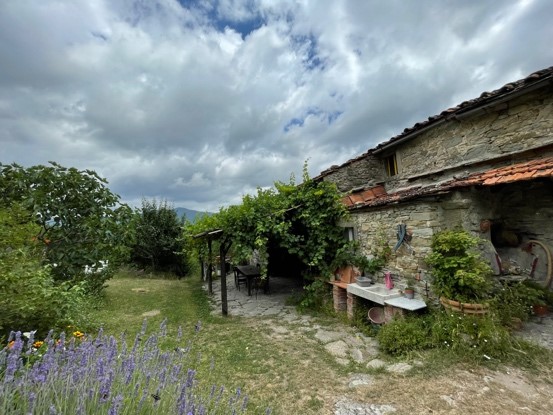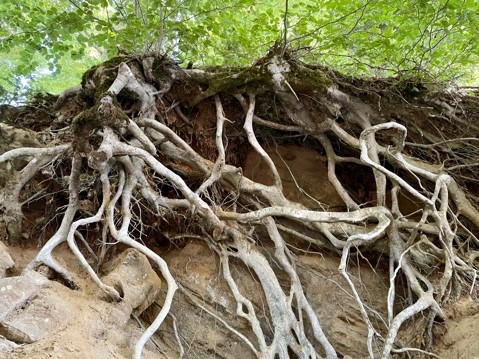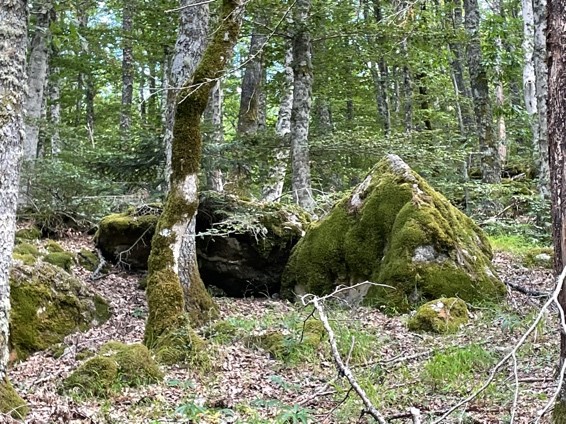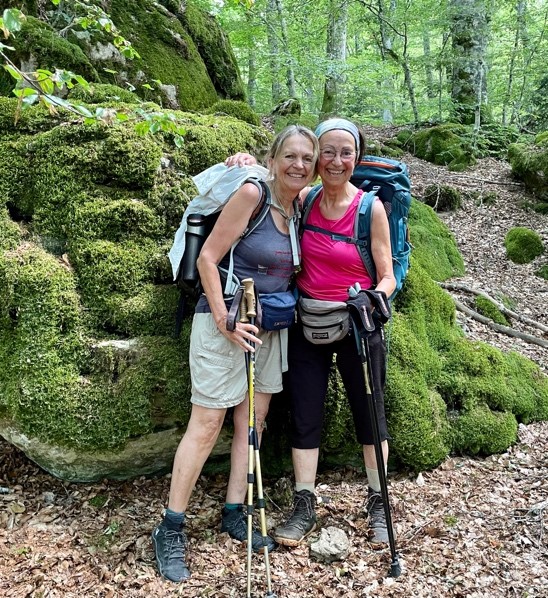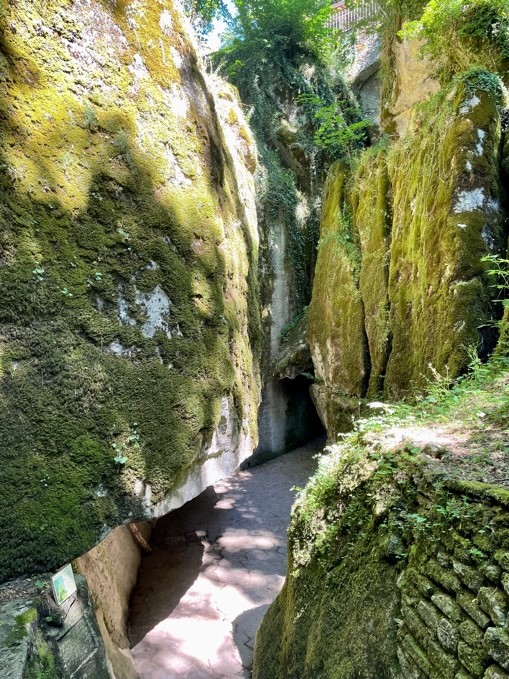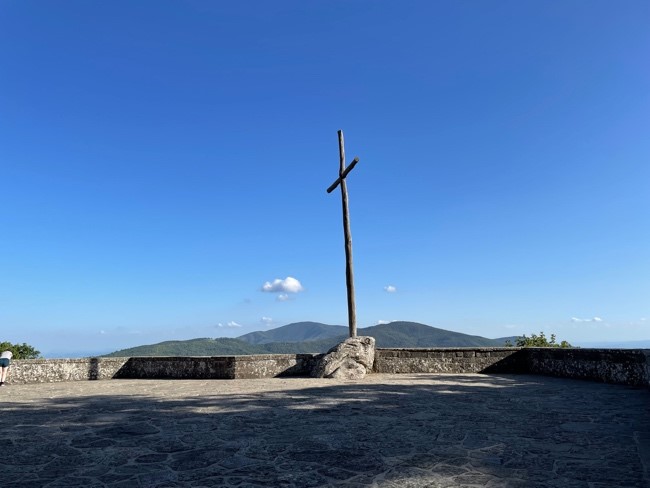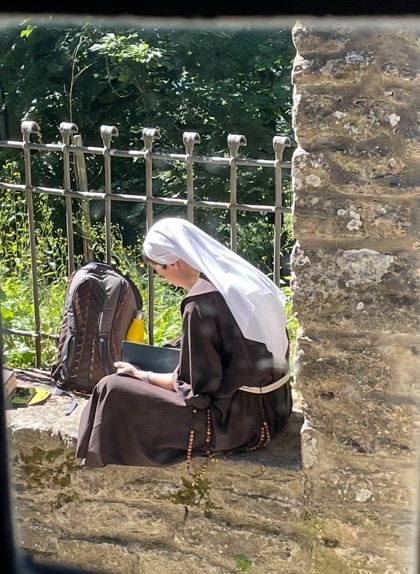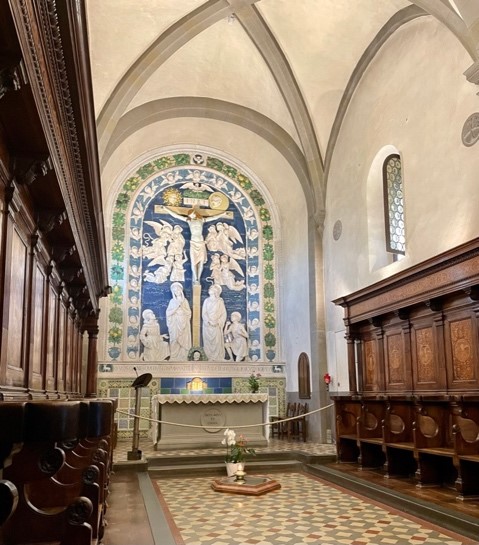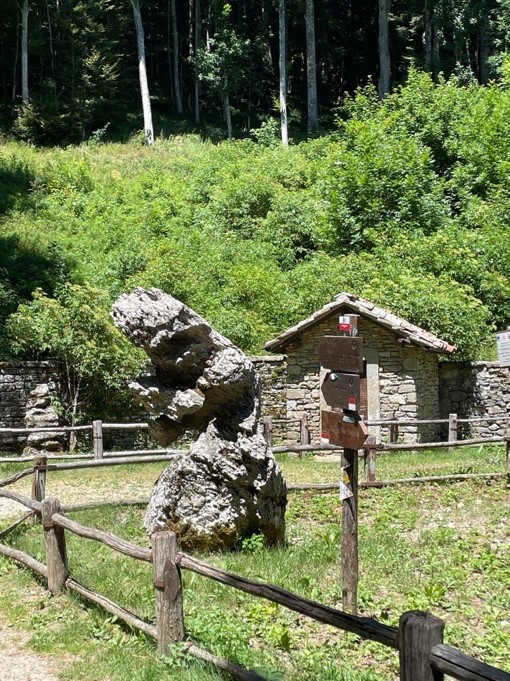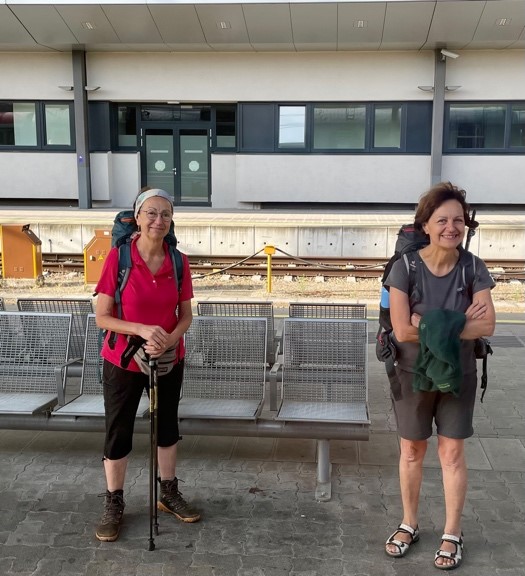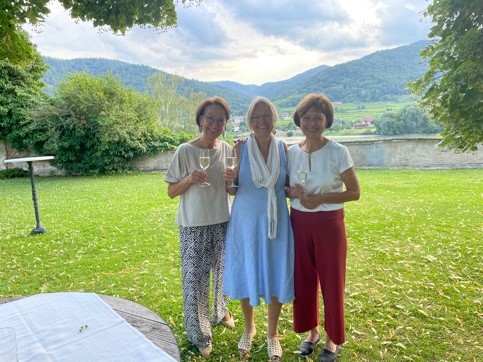Sacred Forest
.
From Casa Santicchio to La Verna
.
The last day of our hike was from Santicchio to La Verna. We were lucky that the morning was still cloudy.
.
.
.
.
Bridge in the town of Rimbocchi
.
.
.
.
.
.
We had no idea about the meaning of this relief on a rock beside the path. The devil? The rays of sun emanating behind him makes it even more intriguing. It could be a reference to a custom in this area we read about. In a specific night, children are sent into the forest with a little lantern for protection. They walk in a group and learn that by supporting each other, fear can be overcome. In this sense, I see this statue as a courage statue for overcoming fear.
.
.
.
.
This old, useless wooden ladder was just laying on the ground. It was so picturesque that I considered it as a piece of art.
.
.
.
.
.
.
.
.
We walked on an old, stone paved road totally free of any traffic. During our entire hike, we did not meet any other pilgrims.
.
.
.
.
.
The forest changed to a spruce forest
.
.
.
.
.
We rested at this charming old stone house surrounded by flowers and hundreds of butterflies
.
.
.
.
.
.
.
The Buddha under the fig tree represented the feeling we had at this house –
absolutely relaxed and at the same time fully alive
.
.
.
.
.
The path up to La Verna was steep and beautiful. Sometimes the world of roots revealed itself.
.
.
.
.
.
The forest changed again to a mixed forest of spruce and beech with moss covering rocks, trees and roots. A friend told me that there exists up to 22,000 kinds of moss in the world. Due to humidity, Mount Penna is especially suited for the abundant growth of moss. I am not sure why I do love moss so much – maybe it is its simplicity and resilience. They only consist of stem and leaves and do not have roots, blossoms or seeds. They are survivors and can resist up to 30 years of draught without dying. When I see moss, it always is like a homecoming.
.
.
There are many caves on Mount Penna. In ancient times, the Mountain was a hiding place for thieves, as the caves and the wilderness provided protection form persecution. The name Mount Penna refers to the Mountain God Pen, the root of the word Apennine.
La Verna, the name of the Franciscan monastery, goes back to an Etruscan and Roman deity called Laverna, a spirit of the Underworld. She is the protector of thieves.
.
.
.
.
.
La Verna from the cliff down below
.
.
.
.
.
Part of the Sanctuary La Verna
.
.
.
.
.
Sasso Spico, a place where St. Frances had visions
.
The quadrant with the cross, a paved square overlooking the valley
.
.
.
.
.
A nun of the order of the Poor Ladies
.
.
.
.
.
Chapel of Stigmata with a relief of the crucifixion by Andrea della Robbia. The sun and the moon above the cross refer to the Canticle of the Sun composed by St. Francis himself. In this song, he deeply praises the Creation and refers to fire and water as brother and sister. He composed the song in Umbrian dialect.
.
.
.
.
.
A rock near the parking place of the Sanctuary in the shape of a praying monk or –
by changing the location – a powerful dragon.
.
.
It was sad to say good bye to the Sacred Forest and also to my sisters. We experienced an almost sacred bond between us with a lot of laughter about our specific peculiarities and patterns.
.
.
.
.
.
Back in Austria after a night train ride from Venice to Vienna
.
.
Two days later, we finished our pilgrimage in the medieval town Duernstein, a place close to where we grew up. Only 63 years after St. Francis died (1289), the Poor Clares established a convent in Duernstein and built a church (1330). Now it is part of the Hotel Richard Loewenherz. We had champagne in the former garden of the convent and enjoyed a delicious dinner afterwards. In the choir of the former Gothic church is still a fresco depicting St. Francis. Unfortunately, it was not accessible this time -I had seen could it years before).
.
.
.
.
.
Former garden of the convent. To the left, you can see the walls of the former Gothic church
.
.
.
.
.
Standing in the sequence we were born,
we each found our right place and role in life
and appreciate each other tremendously.




 .
.